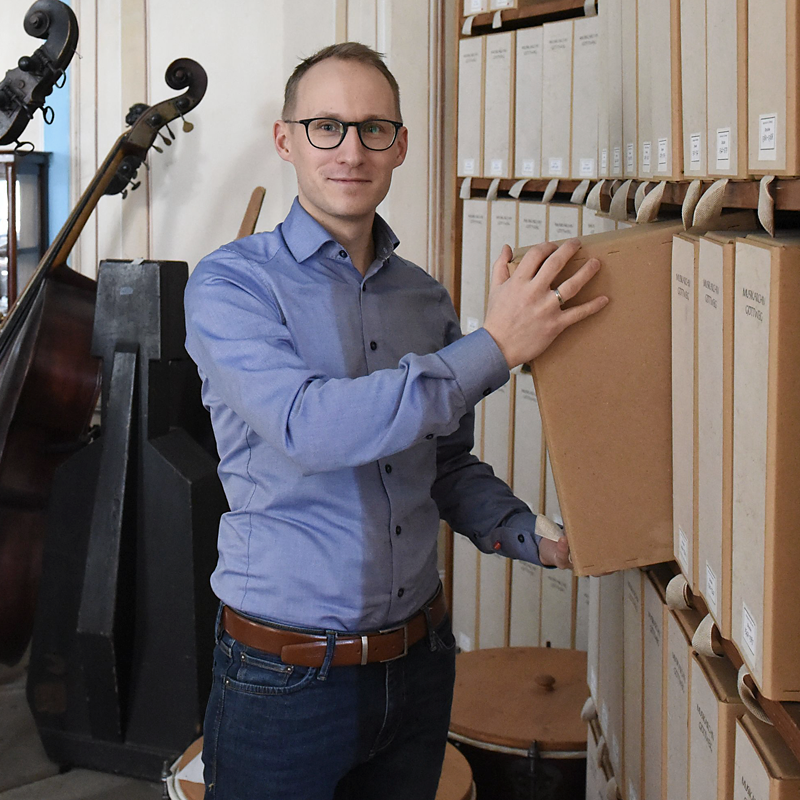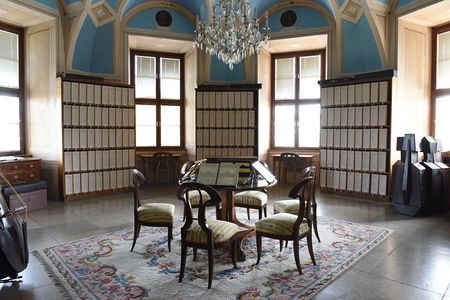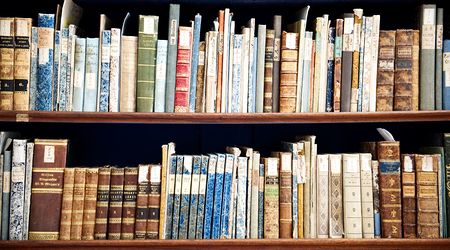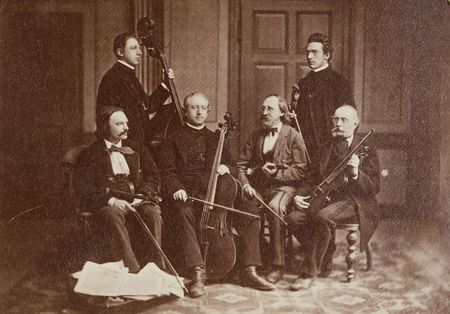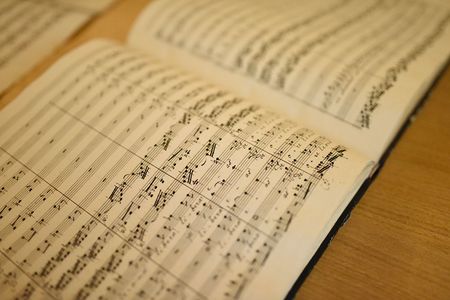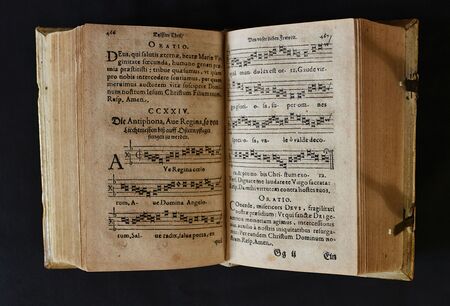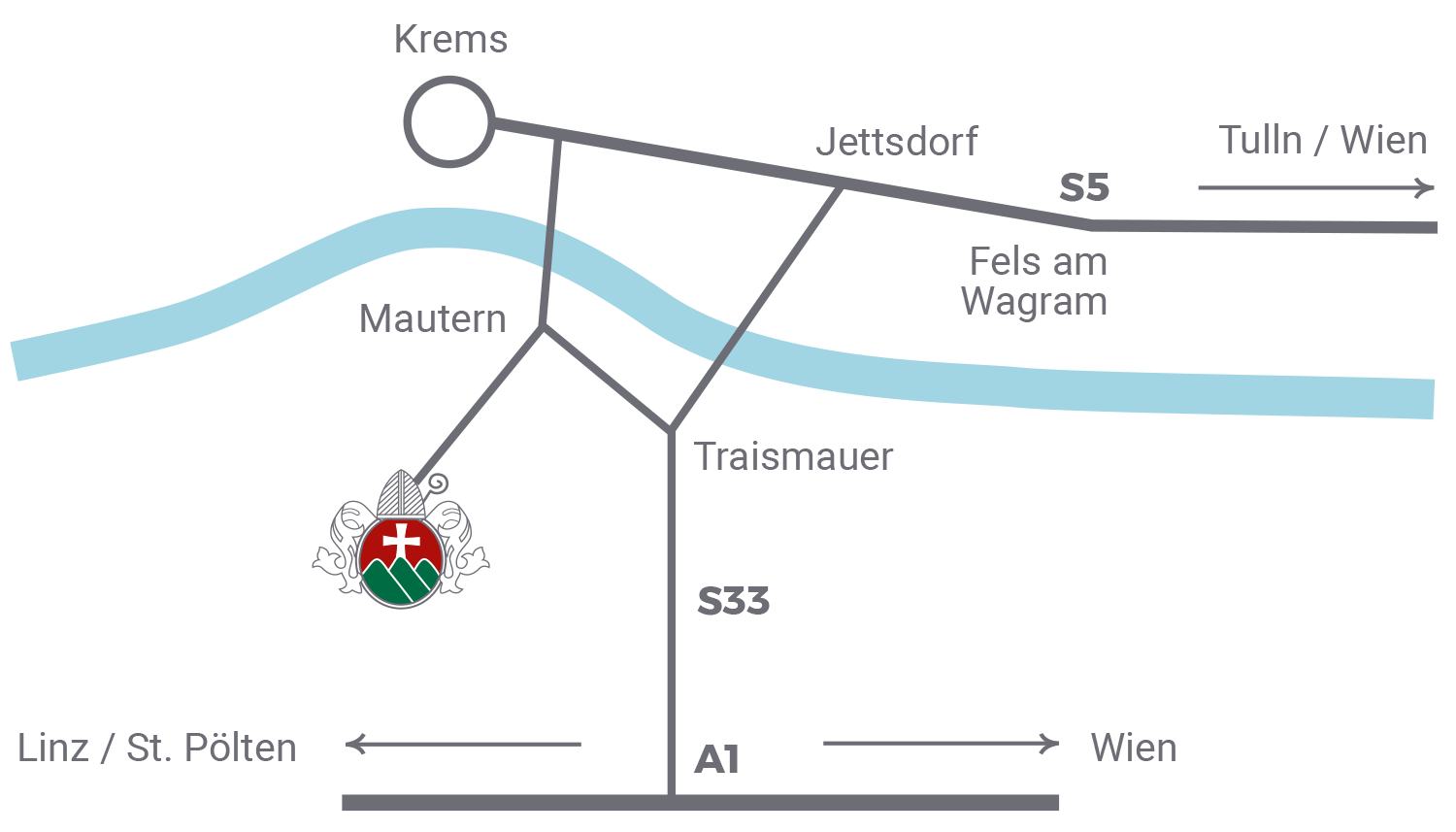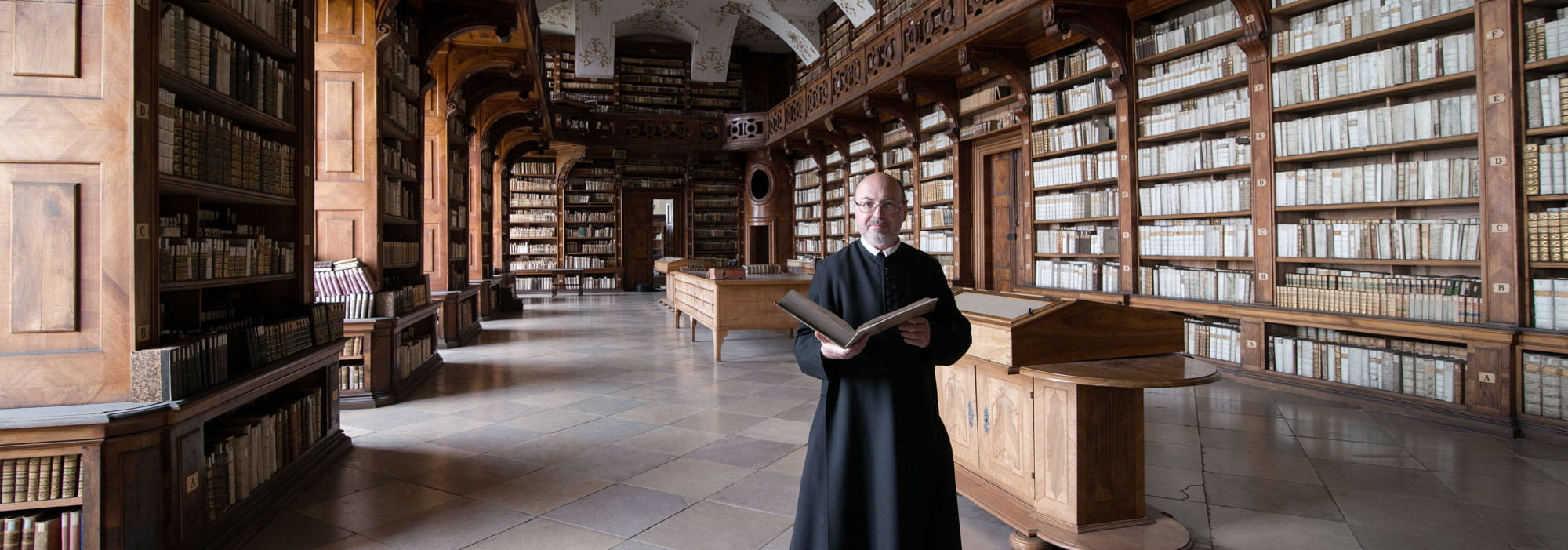
Art Collections
The art collections of Göttweig Abbey are of supra-regional importance:
Abbey library with manuscripts and incunabula collection
Graphic collection
Monastery archive
» KPF-Projekt Göttweig - Rajhrad
Music archive with autograph and instrument collection
Numismatic collection
Monastery pharmacy (currently not accessible due to renovation)
Painting gallery
The art collections are not open to the public, but are only available for scientific work and by appointment.
The annual exhibitions in the Abbey museum in the Kaisertrakt offer excerpts from the extensive collection.
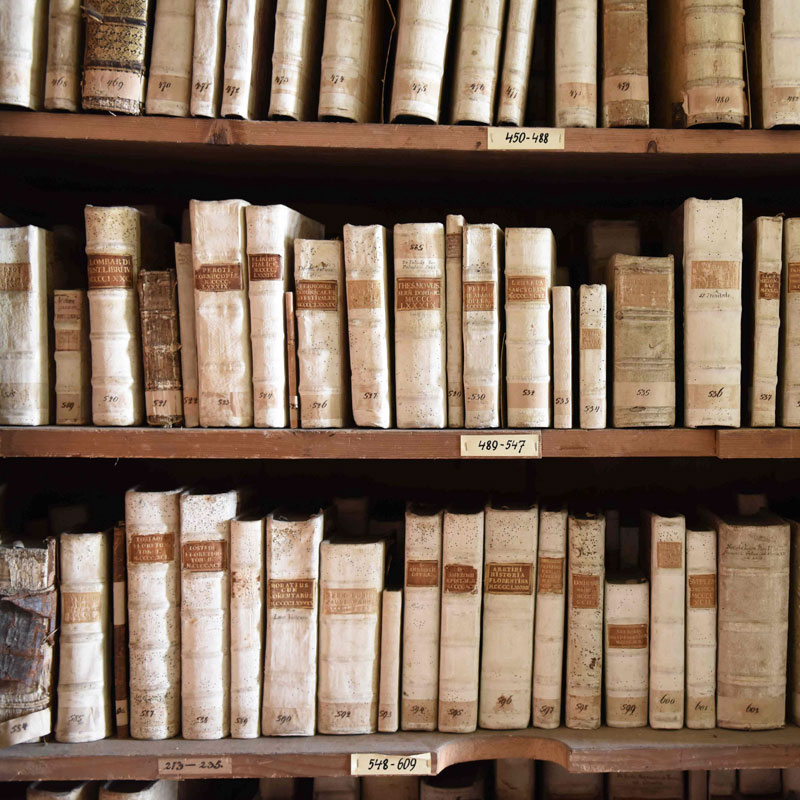
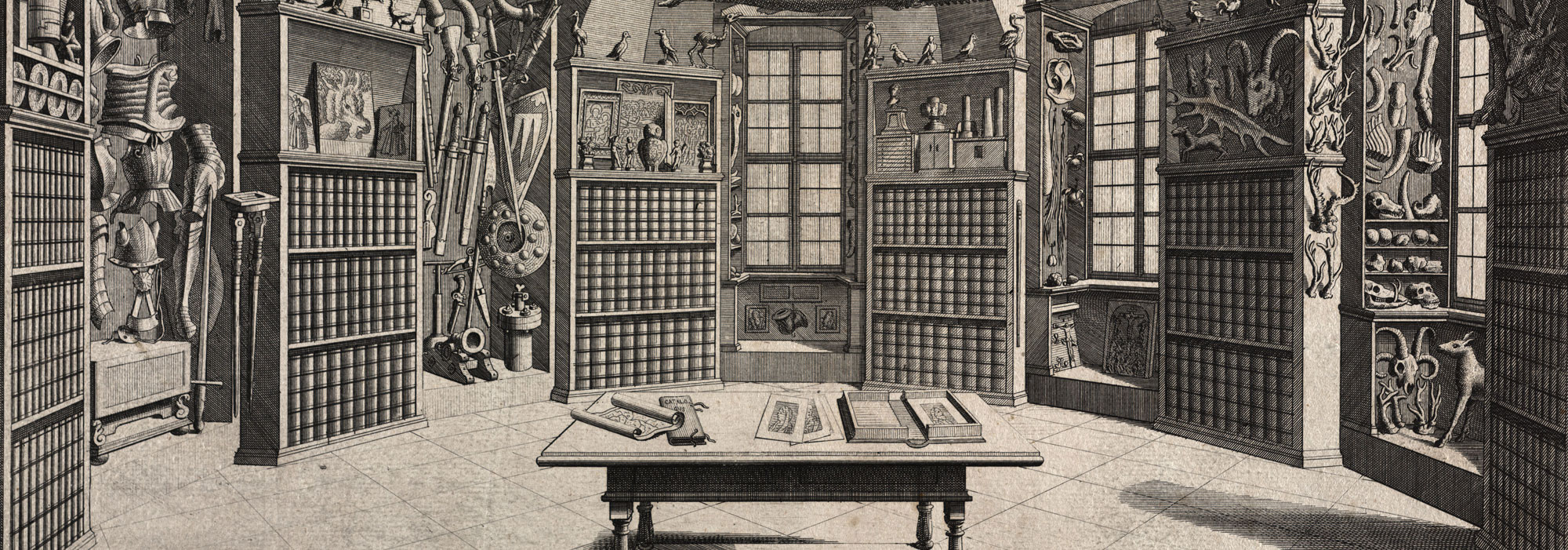
The collection of graphic art at Göttweig Abbey comprises around 32,000 sheets, mainly prints from the German, Dutch, Italian, French and English schools from the 16th to 20th centuries.
Until the collection was systematically established by the Baroque Abbot Gottfried Bessel (1714-1749), engraved devotional and holy pictures, theses and diocesan calendars or portraits of rulers as representative wall decorations can be found in the archives from the beginning of the 17th century. Inspired by the collecting activities of the imperial family and the nobility, and encouraged by his international contacts, Abbot Bessel also acquired prints in Germany and Italy, often even entire collections of several hundred sheets at a time. The original layout of the “Musaei Contignatio Superior” is more reminiscent of a chamber of art and curiosities than a collection of prints determined by the Enlightenment. However, the sheets served to educate the conventuals' taste and were used in many ways for study purposes and as model material by the artists working on the new abbey building and its furnishings. Even before Bessel's time, abbots repeatedly commissioned prints to represent the abbey and its time-honored tradition, either as gifts or as illustrations for their own literary works.
When reorganizing the collection in the 19th century, P. Vinzenz Werl adhered to the principles laid down by the first curator of the Vienna Court Library, Adam Bartsch, and arranged the sheets according to the engravers of the national schools in a classification based on contemporary specialist literature. He wrote a two-volume catalog of the collection, which is still valid and often used today. Despite losses due to the confiscation and removal of the collection during the abolition of the monastery by the National Socialists, from 1960 onwards it was possible to make specific areas of the graphic collection known to a wider public through annual temporary exhibitions.
The cooperation with the Danube University Krems from 2002 onwards resulted in a move from the Sebastiani Tower and archive wing to the medieval “castle”.
The Graphic Collection is not open to the public and can only be used for study purposes after prior registration.
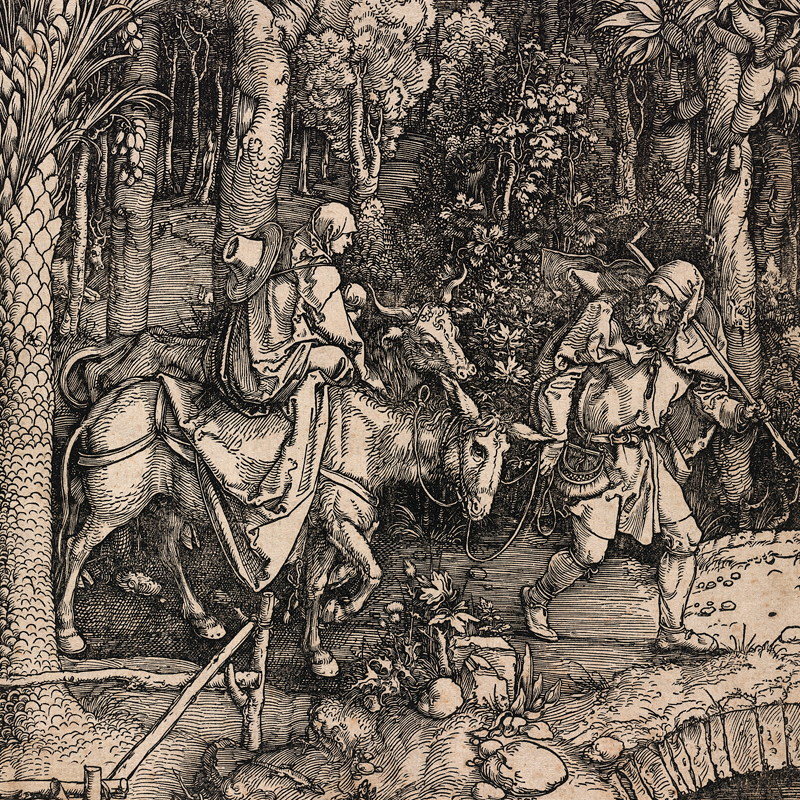
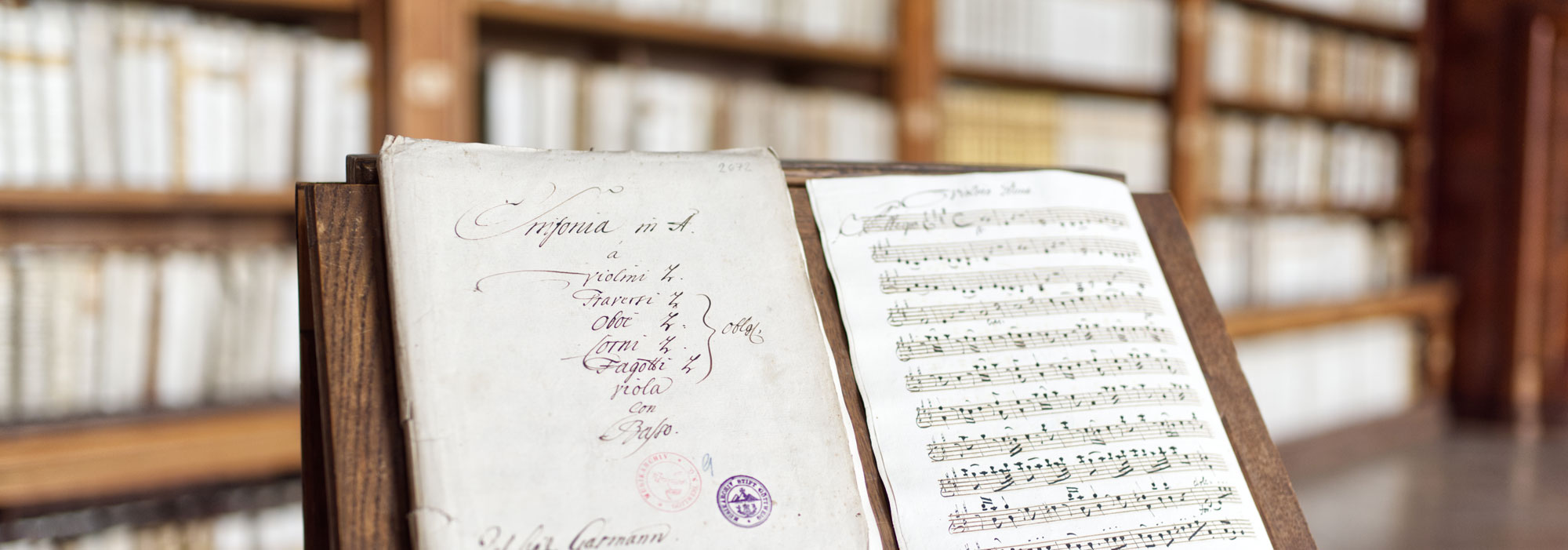
The music archive of Göttweig Abbey is one of the largest and most important music collections in Austria:
It comprises around 10,000 objects from the period from the 17th to the late 19th century, including around 5,000 music manuscripts, 2,500 music prints, 500 writings about music, over 600 letters from musicians and music scholars, as well as textbooks, music journals and historical musical instruments.
In addition to the repertoire for the church music of the monastery or for the private use of the priests, there are extensive holdings from the estates of the Viennese music collectors Raphael Georg Kiesewetter (1773-1850) and Aloys Fuchs (1799-1853), including above all numerous compositions by Johann Sebastian Bach, Georg Friedrich Händel, Joseph and Michael Haydn as well as Wolfgang Amadeus Mozart and Felix Mendelsohn-Bartholdy.
Like all of the monastery's collections, the music archive is not open to the public and is only available for study purposes by prior appointment.
However, individual objects are regularly shown as part of exhibitions in the abbey museum.
Catalogs:
Band I: Der Göttweiger Thematische Katalog von 1830, Faksimile der Originalhandschrift, München-Salzburg 1979; dazu ein Kommentarband mit quellenkundlichen Bemerkungen und Register.
derzeit in Vorbereitung:
Band II: Nicht im Katalog von 1830 verzeichnete Manuskripte
Band III: Musikdrucke
Band IV: Schriften zur Musik (gedruckte Bücher, Manuskripte, Briefe, Zeitschriften, Libretti)
Exhibitions:
- Musikalische Schätze aus neun Jahrhunderten (1979 / Katalog noch lieferbar)
- Händel - Haydn - Mendelssohn. Raritäten aus dem Göttweiger Musikarchiv
(4. April - 1. November 2009)
Literature:
Friedrich W. Riedel: Zur Geschichte des Göttweiger Musikarchivs,
in: 1938-1998. Aus Zerstörung auferstanden.
Zum Gedenken an Abt Wilhelm Zedinek 1898-1971.
Gedenkschrift zur Jahresausstellung 1998 im Benediktinerstift Göttweig,
Stift Göttweig 1998, S. 51-56. (aktualisierte Fassung des Artikels zum » Download )
